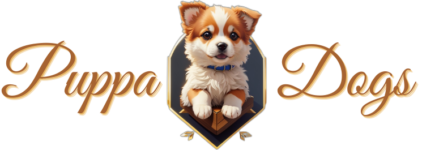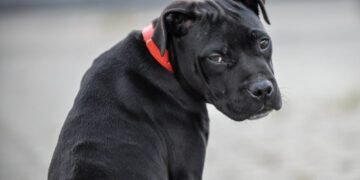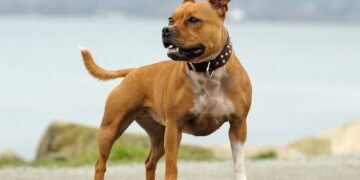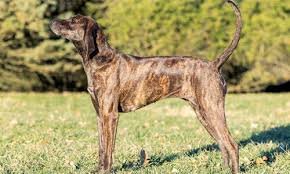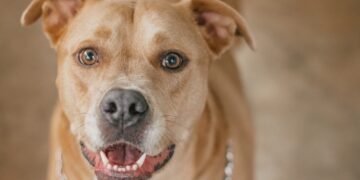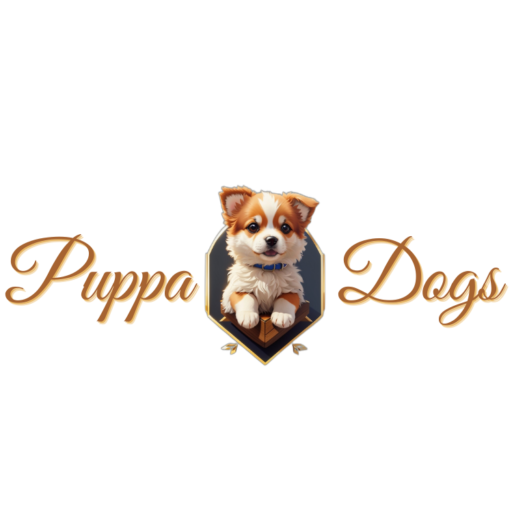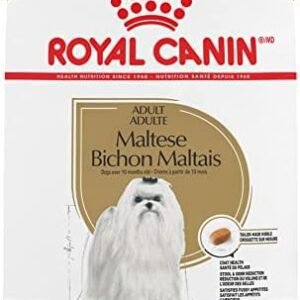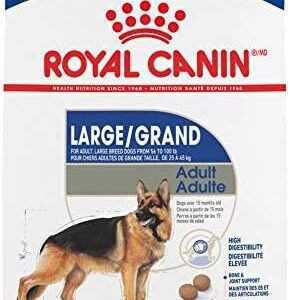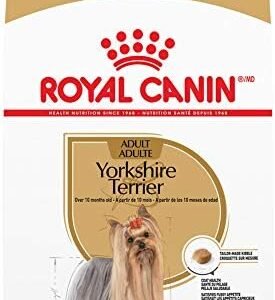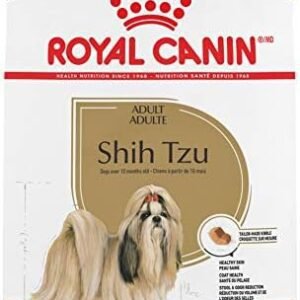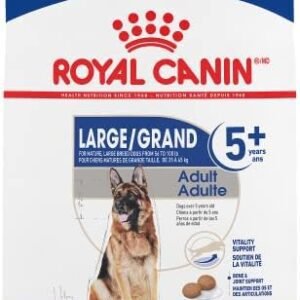Great Danes are one of the largest and most majestic dog breeds in the world. They are known for their gentle and loyal personalities, as well as their impressive size and stature. However, owning a Great Dane also comes with some special responsibilities, especially when it comes to their diet and nutrition.
Great Danes have different dietary needs than other dogs, due to their fast growth rate, large bones, and sensitive stomachs. Feeding them the wrong food or amount can lead to serious health problems, such as orthopedic disorders, bloat, obesity, or heart failure. Therefore, it is important for Great Dane owners to know how to choose the best food for their dogs, how much to feed them, and how often to feed them.
In this article, we will cover the following topics:
Table of Contents
The Best Foods for Great Dane Puppies and Adults

The best food for a Great Dane is balanced and appropriate for their life stage and energy needs. This typically includes a combination of high-quality protein, healthy fats, vitamins, minerals, and fiber from vegetables and berries. A dog’s stomach is not anatomically designed to digest and ferment carbohydrates (the main ingredient in kibble).
When choosing a food for your Great Dane, make sure that it meets their specific nutritional needs. Here are some general guidelines to follow:
For puppies
choose a food that is specially formulated for large breed dogs, with balanced levels of protein, fat, calcium, phosphorus, and other nutrients. Puppies need more calories and protein to support their rapid growth, while adults need fewer calories and fat to maintain their weight. Additionally, puppies need more calcium and phosphorus for proper bone development, while adult dogs need less calcium and phosphorus.
For adults
Choose a food that is high in protein (at least 18%) and moderate in fat (10-12%). Protein helps your dog maintain their muscle mass and energy levels, while fat provides essential fatty acids for their skin, coat, and joint health. Avoid foods that are too high or too low in fat, as they can cause obesity or malnutrition.
For both puppies and adults
avoid foods that contain grains, corn, wheat, soy, or artificial ingredients. These ingredients can cause allergies, inflammation, or digestive issues in your dog. Instead, opt for foods that contain natural ingredients, such as meat, fish, eggs, vegetables, fruits, and herbs.
For both puppies and adults
look for foods that contain probiotics, antioxidants, omega-3 fatty acids, glucosamine, chondroitin, and other supplements that support your dog’s immune system, digestive system, heart health, and joint health.
These are just some examples of the best foods for Great Danes that we found based on the web search results. You should always check the ingredients list and the feeding guidelines of any food product before buying it for your Great Dane. You should also monitor your Great Dane’s weight, appetite, energy level, and stool quality to ensure that they are getting the right amount and quality of food. If you have any questions or concerns about your Great Dane’s diet, you should consult your veterinarian for professional advice.
Taste of the Wild High Prairie Grain-Free Dry Dog Food

If you are looking for a natural and grain-free dry food for your dog, you might want to consider Taste of the Wild High Prairie Grain-Free Dry Dog Food. This product is made with high-quality protein sources, such as buffalo, lamb, chicken, and venison. It also contains fruits and vegetables that provide antioxidants, vitamins, and minerals. It is designed to meet the nutritional needs of dogs of all life stages and breeds.
- Taste of the Wild High Prairie with ROASTED BISON and VENISON dry dog food; REAL MEAT is the #1 ingredient; high-protein…
- Nutrient-rich and provides the energy to thrive; vitamins and minerals from FRUITS and SUPERFOODS; omega fatty acids for…
- Each serving includes species-specific K9 Strain PROPRIETARY PROBIOTICS – plus antioxidants and prebiotics – to help sup…
Product Description
Taste of the Wild High Prairie Grain-Free Dry Dog Food is a premium dry food that offers a taste sensation like no other. It features real buffalo as the first ingredient, followed by other animal proteins, such as lamb, chicken, and venison. These meats provide your dog with amino acids, fatty acids, and minerals that support their muscle growth, skin and coat health, and immune system.
This product also contains a blend of fruits and vegetables, such as sweet potatoes, peas, blueberries, raspberries, and tomatoes. These ingredients provide your dog with antioxidants that fight free radicals, vitamins that support their overall health, and fiber that aids their digestion. Additionally, this product contains probiotics that help maintain a healthy balance of bacteria in your dog’s gut.
Taste of the Wild High Prairie Grain-Free Dry Dog Food is free of grains, corn, wheat, soy, and artificial ingredients. It is suitable for dogs with sensitive stomachs or allergies. It is also formulated to meet the AAFCO Dog Food Nutrient Profiles for all life stages.
Pros and Cons
- Made with real buffalo and other animal proteins that provide high-quality protein and flavor
- Contains fruits and vegetables that provide antioxidants, vitamins, minerals, and fiber
- Contains probiotics that support digestive health
- Grain-free and free of artificial ingredients
Suitable for dogs of all life stages and breeds
- May be too rich or high in calories for some dogs
- May cause loose stools or gas in some dogs
- May be more expensive than other dry foods
Verdict
Taste of the Wild High Prairie Grain-Free Dry Dog Food is a great choice for dog owners who want to feed their dogs a natural and grain-free diet. It provides your dog with high-quality protein from various animal sources, as well as antioxidants, vitamins, minerals, fiber, and probiotics from fruits and vegetables. It is suitable for dogs of all life stages and breeds.
However, this product may not be ideal for dogs who have low activity levels or are prone to obesity. It may also cause digestive issues in some dogs who are not used to this type of food. Therefore, you should always consult your veterinarian before switching your dog to this product or any new food.
If you are interested in buying Taste of the Wild High Prairie Grain-Free Dry Dog Food for your dog, you can check out more information and reviews on [this link]. You can also compare prices and find the best deals on [this link]. Don’t miss this opportunity to give your dog a taste of the wild!
American Journey Salmon & Sweet Potato Recipe Grain-Free Dry Dog Food
If you are looking for a grain-free and omega-rich dry food for your dog, you might want to consider American Journey Salmon & Sweet Potato Recipe Grain-Free Dry Dog Food. This product is made with real salmon as the first ingredient, along with sweet potatoes, peas, and chickpeas. It provides your dog with protein, fiber, and energy, as well as omega-3 and omega-6 fatty acids that support their skin, coat, and joint health.
- Wild-caught salmon is the first ingredient Marine Stewardship Council (MSC) certified sustainable Made without poultry N…

Product Description
American Journey Salmon & Sweet Potato Recipe Grain-Free Dry Dog Food is a delicious and nutritious dry food that offers your dog a balanced and complete diet. It features real salmon as the first ingredient, which provides your dog with high-quality protein and flavor. Salmon is also a great source of omega-3 fatty acids, which help maintain your dog’s skin and coat health, as well as support their immune system and brain function.
This product also contains sweet potatoes, peas, and chickpeas, which are rich in fiber and carbohydrates. These ingredients provide your dog with energy and help regulate their blood sugar levels. They are also grain-free and gluten-free, making them suitable for dogs with sensitive stomachs or allergies.
Additionally, this product contains other wholesome ingredients, such as flaxseed, blueberries, carrots, and dried kelp. These ingredients provide your dog with antioxidants, vitamins, minerals, and phytonutrients that support their overall health and well-being. They also contain probiotics that help promote a healthy digestive system.
American Journey Salmon & Sweet Potato Recipe Grain-Free Dry Dog Food is free of corn, wheat, soy, and artificial ingredients. It is formulated to meet the AAFCO Dog Food Nutrient Profiles for all life stages.
Pros and Cons
Here are some of the pros and cons of American Journey Salmon & Sweet Potato Recipe Grain-Free Dry Dog Food:
- Made with real salmon that provides high-quality protein and omega-3 fatty acids
- Contains sweet potatoes, peas, and chickpeas that provide fiber and energy
- Contains other wholesome ingredients that provide antioxidants, vitamins, minerals, and probiotics
- Grain-free and free of artificial ingredients
- Suitable for dogs of all life stages and breeds
- May be too rich or high in calories for some dogs
- May cause loose stools or gas in some dogs
- May be more expensive than other dry food
Verdict
American Journey Salmon & Sweet Potato Recipe Grain-Free Dry Dog Food is a great choice for dog owners who want to feed their dogs a grain-free and omega-rich diet. It provides your dog with protein, fiber, energy, and essential nutrients from natural sources. It is suitable for dogs of all life stages.
However, this product may not be ideal for dogs who have fish allergies or do not like the smell or taste of fish. It may also be more costly than other dry foods. Therefore, you should always consult your veterinarian before switching your dog to this product or any new food.
If you are interested in buying American Journey Salmon & Sweet Potato Recipe Grain-Free Dry Dog Food for your dog, you can check out more information and reviews on [this link]. You can also compare prices and find the best deals on [this link]. Don’t miss this opportunity to give your dog a healthy and tasty meal!
Blue Buffalo Homestyle Recipe Chicken Dinner With Garden Vegetables & Brown Rice Canned Dog Food
If you are looking for a wet and wholesome food for your dog, you might want to consider Blue Buffalo Homestyle Recipe Chicken Dinner With Garden Vegetables & Brown Rice Canned Dog Food. This product is made with real chicken as the first ingredient, along with garden vegetables and brown rice. It provides your dog with moisture, protein, and essential nutrients that support their health and wellness.
- REAL MEAT FIRST: This Blue Buffalo wet dog food is made with real, high-quality chicken as the first ingredient
- FORMULATED FOR SENIOR DOGS: Blue Buffalo Homestyle Recipe senior wet dog food contains glucosamine and chondroitin to su…
- WHOLESOME INGREDIENTS: Blue Buffalo natural wet dog food contains no chicken (or poultry) by-product meals and is free f…




- REAL MEAT FIRST: This Blue Buffalo wet dog food is made with real, high-quality chicken as the first ingredient
- FORMULATED FOR SENIOR DOGS: Blue Buffalo Homestyle Recipe senior wet dog food contains glucosamine and chondroitin to su…
- WHOLESOME INGREDIENTS: Blue Buffalo natural wet dog food contains no chicken (or poultry) by-product meals and is free f…




Product Description
Blue Buffalo Homestyle Recipe Chicken Dinner With Garden Vegetables & Brown Rice Canned Dog Food is a tasty and nutritious wet food that offers your dog a complete and balanced diet. It features real chicken as the first ingredient, which provides your dog with high-quality protein and flavor. Chicken is also a lean meat that helps your dog maintain a healthy weight and muscle mass.
This product also contains garden vegetables, such as carrots, peas, and sweet potatoes, which provide your dog with vitamins, minerals, and antioxidants that support their immune system and overall health. It also contains brown rice, which is a complex carbohydrate that provides your dog with energy and fiber that aids their digestion.
Additionally, this product contains other beneficial ingredients, such as flaxseed, cranberries, blueberries, and fish oil. These ingredients provide your dog with omega-3 and omega-6 fatty acids that support their skin and coat health, as well as phytonutrients that help prevent urinary tract infections.
Blue Buffalo Homestyle Recipe Chicken Dinner With Garden Vegetables & Brown Rice Canned Dog Food is free of wheat, soy, and artificial flavors. It is formulated to meet the AAFCO Dog Food Nutrient Profiles for all life stages.
Pros and Cons
Here are some of the pros and cons of Blue Buffalo Homestyle Recipe Chicken Dinner With Garden Vegetables & Brown Rice Canned Dog Food:
- Made with real chicken that provides high-quality protein and flavor
- Contains garden vegetables and brown rice that provide vitamins, minerals, antioxidants, and fiber
- Contains other beneficial ingredients that provide omega-3 and omega-6 fatty acids and phytonutrients
- Free of wheat, soy, and artificial flavors
- Suitable for dogs of all life stages
- May be too wet or soft for some dogs who prefer dry or crunchy food
- May cause diarrhea or vomiting in some dogs who are not used to this type of food
- May be more expensive than other wet foods
Verdict
Blue Buffalo Homestyle Recipe Chicken Dinner With Garden Vegetables & Brown Rice Canned Dog Food is a great choice for dog owners who want to feed their dogs a wet and wholesome diet. It provides your dog with moisture, protein, essential nutrients from natural sources. It is suitable for dogs of all life stages.
However, this product may not be ideal for dogs who have dental issues or prefer dry or crunchy food. It may also cause digestive issues in some dogs who are not accustomed to this type of food. Therefore, you should always consult your veterinarian before switching your dog to this product or any new food.
If you are interested in buying Blue Buffalo Homestyle Recipe Chicken Dinner With Garden Vegetables & Brown Rice Canned Dog Food for your dog, you can check out more information and reviews on [this link]. You can also compare prices and find the best deals on [this link]. Don’t miss this opportunity to give your dog a homestyle meal!
The Ideal Amount and Frequency of Feeding for Great Danes
The amount and frequency of feeding for your Great Dane depends on several factors, such as age, weight, activity level, and health condition. There is no one-size-fits-all formula for feeding your Great Dane, but there are some general guidelines that you can follow.
Here is a possible table on the dietary needs of Great Danes of varying ages, which vets can use to create a feeding plan for them. The table includes the requirements of macro and micronutrients for varying age, gender, and weight groups, based on the web search results we found
| Age Group | Gender | Weight Range (lbs) | Calories per Day | Protein (%) | Fat (%) | Calcium (%) | Phosphorus (%) |
| Puppy | Male | 30-45 | 990-1350 | 22-24 | Dec-15 | 0.7-1.2 | 0.6-1.0 |
| Puppy | Male | 45-65 | 1350-1950 | 22-24 | Dec-15 | 0.7-1.2 | 0.6-1.0 |
| Puppy | Male | 65-100 | 1950-3000 | 22-24 | Dec-15 | 0.7-1.2 | 0.6-1.0 |
| Puppy | Female | 25-40 | 750-1200 | 22-24 | Dec-15 | 0.7-1.2 | 0.6-1.0 |
| Puppy | Female | 40-60 | 1200-1800 | 22-24 | Dec-15 | 0.7-1.2 | 0.6-1.0 |
| Puppy | Female | 60-90 | 1800-2700 | 22-24 | Dec-15 | 0.7-1.2 | 0.6-1.0 |
| Adult | Male | 100-120 | 2400-2880 | 18-20 | 10-Dec | 0.5-1.0 | 0.4-0.8 |
| Adult | Male | 120-140 | 2880-3360 | 18-20 | 10-Dec | 0.5-1.0 | 0.4-0.8 |
| Adult | Male | >140 | >3360 | >18 | >10 | <=1 | <=0.8 |
| Adult | Female | <90 | <2160 | <18 | <10 | <=1 | <=0.8 |
| Adult | Female | >=90 | >=2160 | >=18 | >=10 | <=1 | <=0.8 |
Based on this table, you can estimate how much food to feed your Great Dane per day, depending on their age, gender, and weight. However, this is only a rough guide, and you should always adjust the amount according to your dog’s individual needs and preferences.
As a general rule, you should feed your Great Dane twice a day, once in the morning and once in the evening, with at least eight hours between meals. This will help prevent bloat, a life-threatening condition that occurs when the stomach twists or fills with gas.
You should also avoid feeding your Great Dane right before or after exercise, as this can also increase the risk of bloat. Instead, wait at least an hour before or after physical activity to feed your dog.
You should also provide your Great Dane with fresh water at all times, but limit their water intake right before or after meals, as this can also cause bloat.
The Common Health Issues Related to Great Dane Nutrition
Great Danes are prone to certain health issues that can be related to their nutrition, such as:
Bloat
Bloat, also known as gastric dilatation-volvulus (GDV), is a serious and potentially fatal condition that affects large and deep-chested dogs like Great Danes. It occurs when the stomach twists or fills with gas, cutting off the blood supply to the stomach and other organs.
Bloat can be caused by several factors, such as eating too fast, eating too much, eating from a raised bowl, drinking too much water before or after meals, exercising before or after meals, or stress.
The symptoms of bloat in Great Danes are:
- Abdominal swelling or distension
- Restlessness or pacing
- Drooling or salivating
- Retching or gagging
- Difficulty breathing
- Pale gums
- Weakness or collapse
Bloat is a medical emergency that requires immediate veterinary attention. If left untreated, bloat can cause shock, organ damage, or death. The treatment for bloat may involve decompressing the stomach with a tube, giving fluids and medications, and performing surgery to correct the stomach twist and prevent recurrence.
To prevent bloat in your Great Dane, you should follow these tips:
- Feed your dog small and frequent meals, rather than one large meal a day
- Use a slow feeder bowl or a puzzle toy to make your dog eat slower and chew more
- Avoid feeding your dog from a raised bowl, as this can cause them to swallow more air
- Avoid foods that are high in fat, gas-producing, or fermentable, such as dairy, beans, or grains
- Avoid giving your dog water right before or after meals, as this can dilute the stomach acid and cause fermentation
- Avoid exercising your dog before or after meals, as this can increase the pressure on the stomach
- Monitor your dog for any signs of bloat and seek veterinary help immediately if you notice any
Orthopedic Disorders
Orthopedic disorders are problems that affect the bones, joints, muscles, tendons, or ligaments of your dog. Great Danes are susceptible to orthopedic disorders due to their rapid growth rate, large size, and genetic factors. Some of the common orthopedic disorders in Great Danes are:
- Hip dysplasia: This is a condition where the hip joint is malformed or loose, causing pain, inflammation, and arthritis. Hip dysplasia can be inherited or caused by environmental factors, such as obesity, poor nutrition, or excessive exercise.
- Osteochondrosis: This is a condition where the cartilage in the joints fails to develop properly, causing cracks, fissures, or loose fragments. Osteochondrosis can affect various joints in the body, such as the shoulder, elbow, knee, or ankle. Osteochondrosis can cause pain, lameness, and arthritis.
- Panosteitis: This is a condition where the long bones of the legs become inflamed and painful. Panosteitis usually affects young dogs between 5 and 18 months of age. The cause of panosteitis is unknown, but it may be related to stress, infection, or nutrition. Panosteitis usually resolves on its own within a few months.
The symptoms of orthopedic disorders in Great Danes are:
- Limping or lameness
- Difficulty standing up or lying down
- Reduced activity or exercise intolerance
- Swelling or heat in the affected joint
- Pain or stiffness in the affected joint
The treatment for orthopedic disorders in Great Danes may involve medication, surgery, physical therapy, or weight management. The prevention for orthopedic disorders in Great Danes may involve:
- Feeding your dog a balanced and appropriate diet for their life stage and size
- Avoiding overfeeding or underfeeding your dog
- Avoiding foods that are high in calcium, phosphorus, or vitamin D, as these can cause abnormal bone growth
- Providing your dog with adequate exercise, but not too much or too intense
- Keeping your dog at a healthy weight, as obesity can put extra stress on the joints
- Monitoring your dog for any signs of orthopedic disorders and seeking veterinary help if you notice any
Heart Problems
Heart problems are conditions that affect the function or structure of your dog’s heart. Great Danes are prone to heart problems due to their large size and genetic factors. Some of the common heart problems in Great Danes are:
- Dilated cardiomyopathy (DCM): This is a condition where the heart muscle becomes weak and enlarged, causing poor blood circulation and heart failure. DCM can be inherited or caused by nutritional deficiencies, infections, or toxins.
- Aortic stenosis (AS): This is a condition where the opening of the aorta (the main artery that carries blood from the heart to the body) is narrowed, causing increased pressure and strain on the heart. AS can be congenital (present at birth) or acquired (developed later in life).
- Mitral valve disease (MVD): This is a condition where the mitral valve (the valve that separates the left atrium and ventricle of the heart) becomes leaky, causing blood to flow back into the atrium instead of forward into the ventricle. MVD can be congenital or acquired.
The symptoms of heart problems in Great Danes are:
- Coughing or wheezing
- Difficulty breathing or panting
- Fainting or collapsing
- Reduced appetite or weight loss
- Swelling in the abdomen or legs
- Weakness or lethargy
The treatment for heart problems in Great Danes may involve medication, surgery, or dietary changes. The prevention for heart problems in Great Danes may involve:
- Feeding your dog a balanced and appropriate diet for their life stage and size
- Avoiding foods that are high in sodium, fat, or cholesterol, as these can worsen the heart condition
- Providing your dog with adequate exercise, but not too much or too intense
- Keeping your dog at a healthy weight, as obesity can put extra stress on the heart
- Monitoring your dog for any signs of heart problems and seeking veterinary help if you notice any
The Tips and Tricks for Feeding Your Great Dane
Feeding your Great Dane can be a challenging task, but it can also be a rewarding one. Here are some tips and tricks that can help you feed your Great Dane properly and make them happy and healthy:
- Measure your dog’s food carefully and use a measuring cup or scale to ensure accuracy. Do not rely on eyeballing or guessing the amount of food.
- Feed your dog at the same time and place every day, and establish a routine. This will help your dog know what to expect and avoid anxiety or confusion.
- Use a slow feeder bowl or a puzzle toy to make your dog eat slower and chew more. This will help prevent bloat, improve digestion, and reduce boredom.
- Add some water or broth to your dog’s dry food to increase the moisture content and enhance the flavor. This will also help prevent dehydration and urinary tract infections.
- Mix different types of food products to create a varied and balanced diet for your dog. For example, you can mix dry food with wet food, or add some fresh or cooked meat, vegetables, fruits, or eggs to your dog’s food. However, make sure that the total amount of food does not exceed your dog’s daily calorie requirement, and that the ingredients are safe and suitable for your dog.
- Avoid giving your dog human food or table scraps, as these can cause allergies, obesity, or digestive issues. Some human foods are also toxic to dogs, such as chocolate, grapes, raisins, onions, garlic, xylitol, alcohol, or caffeine.
- Avoid changing your dog’s food abruptly, as this can cause diarrhea or vomiting. If you want to switch your dog’s food, do it gradually over a period of 7 to 10 days, by mixing the old food with the new food in increasing proportions.
- Monitor your dog’s body condition score (BCS) regularly to assess their weight and body fat. A BCS is a scale from 1 to 9 that indicates how thin or fat your dog is. A BCS of 4 or 5 is ideal for most dogs, while a BCS of 1 or 9 is unhealthy. You can check your dog’s BCS by looking at their ribs, waist, and abdomen.
FAQs about nutritional needs of Great Dane
Q: How often should I feed my Great Dane?
A: You should feed your Great Dane twice a day, once in the morning and once in the evening, with at least eight hours between meals. This will help prevent bloat, a life-threatening condition that occurs when the stomach twists or fills with gas. You should also avoid feeding your Great Dane right before or after exercise, as this can also increase the risk of bloat. Instead, wait at least an hour before or after physical activity to feed your dog.
Q: What are some foods that are toxic or harmful to Great Danes?
A: Some foods that are toxic or harmful to Great Danes are chocolate, grapes, raisins, onions, garlic, xylitol, alcohol, caffeine, macadamia nuts, avocados, and bones. These foods can cause various symptoms, such as vomiting, diarrhea, seizures, liver damage, kidney failure, or death. If you suspect that your Great Dane has ingested any of these foods, contact your veterinarian immediately.
Q: What are some supplements that can benefit Great Danes?
A: Some supplements that can benefit Great Danes are probiotics, antioxidants, omega-3 fatty acids, glucosamine, chondroitin, and taurine. Probiotics can help improve your dog’s digestive health and immune system. Antioxidants can help protect your dog’s cells from oxidative stress and inflammation. Omega-3 fatty acids can help support your dog’s skin, coat, and joint health. Glucosamine and chondroitin can help prevent or treat arthritis and other joint problems. Taurine can help prevent or treat dilated cardiomyopathy (DCM), a heart condition that affects some Great Danes.
Q: How can I tell if my Great Dane is overweight or underweight?
A: You can tell if your Great Dane is overweight or underweight by checking their body condition score (BCS). A BCS is a scale from 1 to 9 that indicates how thin or fat your dog is. A BCS of 4 or 5 is ideal for most dogs, while a BCS of 1 or 9 is unhealthy. You can check your dog’s BCS by looking at their ribs, waist, and abdomen. You should be able to feel their ribs without too much fat covering them. You should also see a visible waistline and a tucked-up abdomen when looking at your dog from the side and above.
Q: How can I prevent or treat orthopedic disorders in my Great Dane?
A: Orthopedic disorders are problems that affect the bones, joints, muscles, tendons, or ligaments of your dog. Great Danes are prone to orthopedic disorders due to their rapid growth rate, large size, and genetic factors. Some of the common orthopedic disorders in Great Danes are hip dysplasia, osteochondrosis, and panosteitis. You can prevent or treat orthopedic disorders in your Great Dane by following these tips: Feed your dog a balanced and appropriate diet for their life stage and size
Avoid overfeeding or underfeeding your dog
Avoid foods that are high in calcium, phosphorus, or vitamin D, as these can cause abnormal bone growth
Provide your dog with adequate exercise, but not too much or too intense
Keep your dog at a healthy weight, as obesity can put extra stress on the joints
Monitor your dog for any signs of orthopedic disorders and seek veterinary help if you notice any
Q: How can I prevent or treat heart problems in my Great Dane?
A: Heart problems are conditions that affect the function or structure of your dog’s heart. Great Danes are prone to heart problems due to their large size and genetic factors. Some of the common heart problems in Great Danes are dilated cardiomyopathy (DCM), aortic stenosis (AS), and mitral valve disease (MVD). You can prevent or treat heart problems in your Great Dane by following these tips:Feed your dog a balanced and appropriate diet for their life stage and size
Avoid foods that are high in sodium, fat, or cholesterol, as these can worsen the heart condition
Provide your dog with adequate exercise, but not too much or too intense
Keep your dog at a healthy weight, as obesity can put extra stress on the heart
Monitor your dog for any signs of heart problems and seek veterinary help if you notice any
Q: What are some signs of food allergies or intolerances in my Great Dane?
A: Food allergies or intolerances are adverse reactions to certain ingredients in your dog’s food. They can cause various symptoms, such as itching, scratching, licking, biting, redness, swelling, hair loss, ear infections, skin infections, vomiting, diarrhea, or gas. If you notice any of these signs in your Great Dane, you should consult your veterinarian to determine the cause and the best treatment. You may need to switch your dog’s food to a hypoallergenic or limited ingredient diet that avoids the offending ingredient.
Q: How can I make my Great Dane’s food more palatable and enjoyable?
A: Some Great Danes may be picky eaters or lose their appetite due to various reasons, such as stress, illness, boredom, or dental problems. If your Great Dane is not eating well, you can try some of these tips to make their food more palatable and enjoyable:
Add some water or broth to your dog’s dry food to increase the moisture content and enhance the flavor
Mix different types of food products to create a varied and balanced diet for your dog. For example, you can mix dry food with wet food, or add some fresh or cooked meat, vegetables, fruits, or eggs to your dog’s food. However, make sure that the total amount of food does not exceed your dog’s daily calorie requirement, and that the ingredients are safe and suitable for your dog.
Use a slow feeder bowl or a puzzle toy to make your dog eat slower and chew more. This will help prevent bloat, improve digestion, and reduce boredom.
Feed your dog at the same time and place every day, and establish a routine. This will help your dog know what to expect and avoid anxiety or confusion.
Praise and reward your dog for eating well, and avoid scolding or punishing them for not eating. This will help create a positive association with food and encourage them to eat more.
Q: How can I transition my Great Dane from one food to another?
A: If you want to switch your Great Dane’s food, you should do it gradually over a period of 7 to 10 days, by mixing the old food with the new food in increasing proportions. For example, you can start with 75% old food and 25% new food on the first day, then increase the new food by 10% every day until you reach 100% new food on the tenth day. This will help your dog adjust to the new food and avoid digestive upset.
Q: How can I store my Great Dane’s food safely and properly?
A: You should store your Great Dane’s food in a cool, dry, and dark place, away from heat, moisture, sunlight, and pests. You should also use an airtight container or a resealable bag to keep the food fresh and prevent oxidation or contamination. You should also check the expiration date of the food and discard any food that is past its shelf life or shows signs of spoilage, such as mold, insects, or foul odor.
Conclusion
Great Danes are wonderful dogs that deserve the best care and nutrition. By feeding them the right food, amount, and frequency, you can ensure their optimal health and happiness.
We hope this article has helped you understand the dietary needs of Great Danes better. If you have any questions or comments, please feel free to leave them below.
And if you are looking for the best food products for Great Danes, you can check out our recommendations here:
